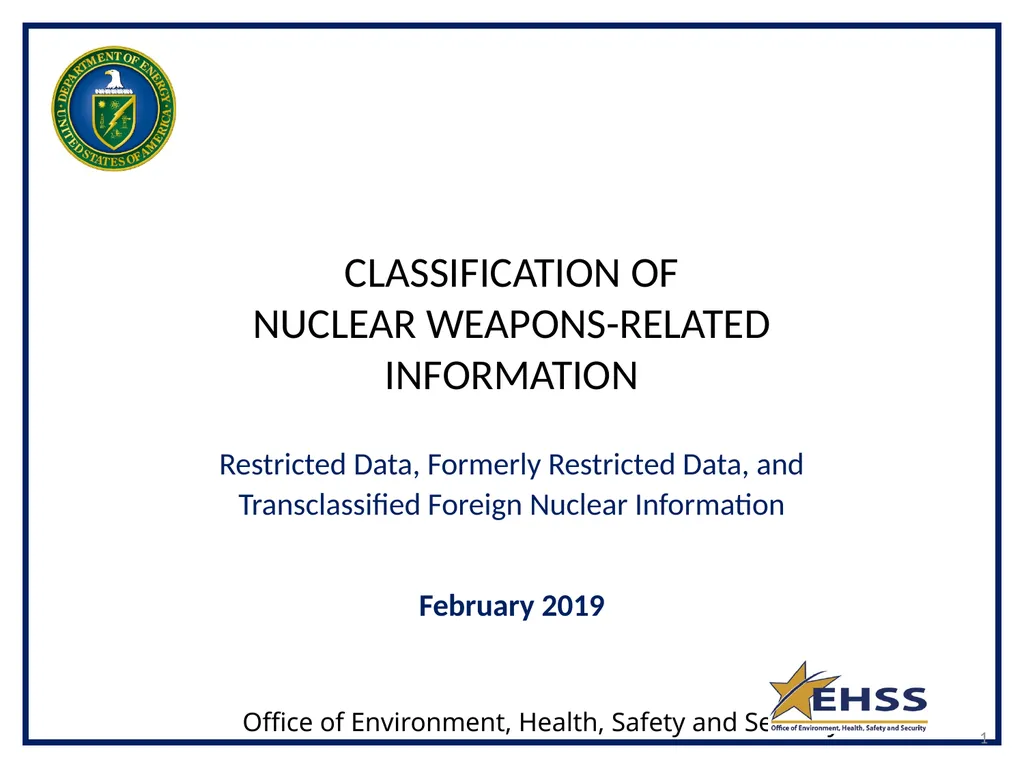
CLASSIFICATION OF NUCLEAR WEAPONS-RELATED
Author: karlyn-bohler | Published: 2025-08-08
Description: CLASSIFICATION OF NUCLEAR WEAPONS-RELATED INFORMATION Restricted Data, Formerly Restricted Data, and Transclassified Foreign Nuclear Information February 2019 1 Purpose To meet the training requirements required for persons from other
Download Presentation
Download the PPT/PDF: Download
Transcript:
Loading transcript…